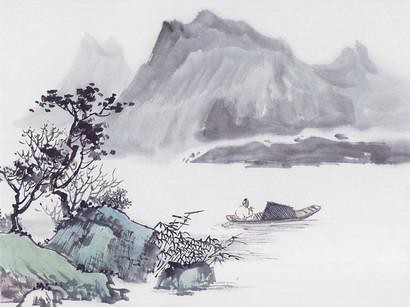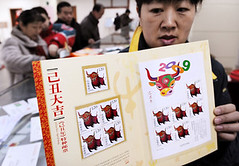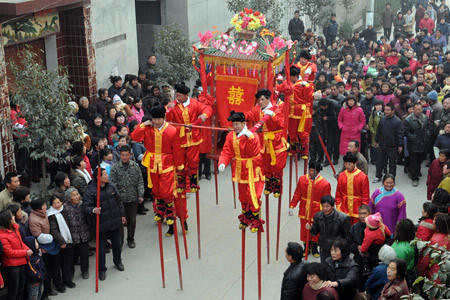| Home > Living in China > Traditional Chinese Medicine |
Famous TCM Doctors and Books in Different Periods
The history of TCM can be summarized by a list of important doctors and books.
1. Unknown period, Huángdì nèijīng (Yellow Emperor's Inner Canon) –Sùwèn and Língshū
The earliest classic of TCM passed on to the present.
2. Warring States Period (5th century BC to 221 BC): Silk manuscripts recording channels and collaterals, Zubi shiyi mai jiu jing (Moxibustion Classic of the Eleven Channels of Legs and Arms), and Yinyang shiyi mai jiu jing (Moxibustion Classic on the Eleven Yin and Yang Channels). The latter was part of a cache of texts found in Mawangdui in the 1970s.
3. Han Dynasty (206 BC–AD 220) to Three Kingdoms Period (220 - 280 AD):
Zhenjiu zhenzhong jing (Classic of Moxibustion and Acupuncture Preserved in a Pillow) by Huà Tuó.
Shanghan zabing lun, which has since been split into two texts: the Shānghán lùn ("Treatise on Cold Damage" - focusing on febrile conditions attributed to "Cold") and the Jingui yaolue ("Essentials of the Golden Cabinet" - focusing on "miscellaneous illnesses") by Zhāng Zhòngjǐng.
4. Jìn Dynasty (265-420): Zhēnjiǔ jiǎyǐ jīng (Systematic Classic of Acupuncture and Moxibustion) by Huángfǔ Mì
5. Tang Dynasty (618?07)
Beiji qianjin yaofang(Emergency Formulas Worth a Thousand in Gold) and Qianjin yifang (Supplement to the Formulas Worth a Thousand in Gold) by Sūn Sīmiǎo.
Waitai miyao(Arcane Essentials from the Imperial Library) by Wang Tao.
6. Song Dynasty (960 ?1279):
Tóngrén shūxué zhēnjiǔ tújīng(Illustrated Manual of the Practice of Acupuncture and Moxibustion at (the Transmission) (and other) Acu-points, for use with the Bronze Figure) by Wáng Wéiyī.
7. Yuan Dynasty (1271 to 1368): Shísì jīng fāhuī(Exposition of the Fourteen Channels) by Huá Shòu
8. Ming Dynasty (1368 to 1644): golden age of acupuncture and moxibustion. Many famous doctors and books. To name only a few:
Zhēnjiǔ dàquan (A Complete Collection of Acupuncture and Moxibustion) by Xu Feng.
Zhēnjiǔ jùyīng fāhuī(An Exemplary Collection of Acupuncture and Moxibustion and their Essentials) by Gāo Wǔ
Zhēnjiǔ dàchéng (Compendium of Acupuncture and Moxibustion) by Yáng Jìzhōu, completed in 1601.
Běncǎo gāngmù(Compendium of Materia Medica) by Lǐ Shízhēn, the most complete and comprehensive pre-modern herbal book (completed in 1578).
Wenyi lun, by Wu Youxing (1642).
9. Qing Dynasty (1644-1912):
Yizong jinjian (Golden Mirror of the Medical Tradition) compiled by Wu Quan under imperial commission.
Zhenjiu fengyuan(The Source of Acupuncture and Moxibustion) by Li Xuechuan
Wenre lun, by Ye Tianshi
Wenbing tiaobian (Systematized Identification of Warm-factor disorders) compiled by Wu Jutong in 1798.
All above-mentioned books and doctors were dedicated to traditional chinese medicine. They've left the great wealth to chinese generations till now. To inherit and further develop traditional chinese medicine, the young generation need to make more efforts.
Art
 more
moreShadow Play still Popular in Some
Shadow play, a traditional Chinese folk art with a history of more

Origin and Tools of Ink & Wash
Ink and wash painting is an East Asian type of brush painting, also

China Issued Special Stamps for
Citizens in Nanjing, East of China's Jiangsu Province, queued

Customs
 more
moreChinese Kungfu
Origin and Development of Wudang Martial Arts
According to the legend, Zhang Sanfeng is the originator of the
Introduction to Wudang Mountains
The Wudang Mountains, also known as Wu Tang Shan or simply Wudang,
Everybody was kungfu fighting
Niels Tsai, a kungfu enthusiast from Malaysia, was halfway up misty




 print
print  email
email  Favorite
Favorite  Transtlate
Transtlate 
